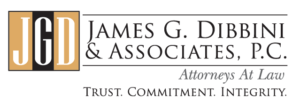Are You Eligible for a Loan Modification?
Ever since the housing crisis began many homeowners across the country have lost their homes to foreclosures. In fact, since 2007, nearly four million homes have been lost to foreclosures. However, recent data shows that the market has been steadily improving. In 2012, there were 7,209 foreclosure sales in New York, which accounted for 5.55% of all home sales in the state. The number of foreclosure home sales in New York has decreased 18.63% from 2011 and 42% from 2010.
This decrease in the foreclosure sales in New York is a promising sign for many homeowners who have fallen behind on their mortgage and are facing the possibility of foreclosure. This decrease may be attributed to the Home Affordable Modification Program, also known as HAMP. Under the HAMP program, the federal government has offered billions of dollars in subsidies to lenders who are helping borrowers in modifying their mortgages. Over one hundred mortgage companies have agreed to participate in the HAMP program and all other mortgage companies with loans owned by Fannie Mae and Freddie Mac are required to participate. The HAMP program has helped many homeowners since 2009 who were behind on their mortgage or homeowners who are current on their mortgage but owe more than what their homes are worth obtain a loan modification from their lenders. In order to be considered for the HAMP program, a homeowner must meet the following criteria: the homeowner obtained their mortgage on or before January 1, 2009; the homeowner owes up to $729,750 on their primary residence or single unit rental property; up to $934,200 on a 2-unit rental property; up to $1,129,250 on a 3-unit rental property or $1,403,400 on a 4-unit rental property; the property has not been condemned; the homeowner has a financial hardship and is behind on their mortgage or in danger of falling behind on their mortgage payments; the homeowner must have sufficient, documented income to support a modified payment; the homeowner must not have been convicted within 10 years of a felony in connection with a mortgage or real estate transaction; the current monthly mortgage payments are costing the homeowner over 31% of their gross monthly income.
Lenders who participate in the HAMP program are required to work with borrowers who meet the above criteria set forth by the HAMP program.
Obtaining a loan modification from your lender can be time consuming, stressful, difficult, and intimidating, especially for borrowers who are behind on their mortgages. Lenders require a myriad of supporting documents from the borrowers in order to process and consider the borrower for a loan modification. Other problems such as not getting a return call from the lender during the loan modification process and not understanding the loan modification are some of the problems that borrowers may face.
If you are a homeowner and are worried about losing your home to foreclosure, please contact James G. Dibbini & Associates, P.C. today. Our office can assist you in the loan modification process and foreclosure defense. A loan modification can save your home, lower your monthly mortgage payments, lower your interest rates, extend the life of the loan, put the arrears on the back of the mortgage loan, and change your variable interest rate loan to a fixed interest rate loan. We are prepared and eager to assist you with your loan modification and foreclosure defense in order for you to keep your home, so please contact us today.
Our office also provides legal services in the areas of:
-Cooperative Apartment & Condo Representation
-Property Management Company Support and Representation
-Commercial & Residential Real Estate Closings
-Civil Litigation
-Landlord & Tenant Law
-General Business Law
-DHCR Representation
-Tax Certiorari
-Zoning Issues and Variances
-Housing and Building Code Violation Matters
For more information or to discuss the specifics of your situation, please do not hesitate to contact James G. Dibbini, Esq. at 914-965-1011 or jdibbini@dibbinilaw.com.
This James G. Dibbini & Associates, P.C. Newsletter is a publication of James G. Dibbini & Associates, P.C. All Rights Reserved. Quotation with attribution is permitted. This newsletter offers general information and should not be taken or used as legal advice for specific situations, which depend on the evaluation of precise factual circumstances. Please note that James G. Dibbini & Associates, P.C. does not undertake to update its publications after their publication date to reflect subsequent developments. Prior results do not guarantee a similar outcome. This publication may contain attorney advertising.






